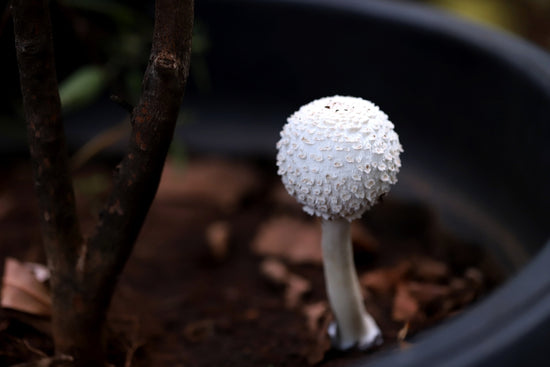No, we are not talking about noodles that you are served in the restaurant. By vegetable noodles, we mean the noodles created from vegetables like Zucchini or Spaghetti Squash. Surprised? Wait for more - these vegetable noodles can be prepared at home, and all you need to do is start now!
What will you need to prepare vegetable noodles?
Raised Beds in the garden, seeds, soil, tools and some enthusiasm. You could get your kids and pets involved too! And once your veggies are ready you could transform into a kitchen maven and by using a spiralizer, peeler, or slicer, vegetables, make noodle substitutes that are:
- Low calorie
- Vary in texture and style
- Dish versatile
- Are more comfortable than making traditional noodles

The list here describes vegetables that can be quickly grown in a raised garden for creating tasty noodle substitutes:
1. Carrots:
Carrots are easy to grow and highly nutritious root vegetables that belong to the Apiaceae family. Botanically known as Daucus Carota L., Carrots can be grown all year round with proper irrigation facility (primary carrots are a cold season crop.) Buy desi carrots online.How to sow carrot seeds?
- Sow seeds directly on raised beds or in containers.
- Use 2 part garden soil & 1 part any organic manure or 1 part garden soil, 1 part coco-peat & 1 part Vermicompost.
- Make very shallow holes (1 cm) with a distance of 1 x 1 feet apart by finger throughout the surface of soil medium.
- Sow 2-3 seeds per hole.
- Push the seeds little in soil medium & cover them entirely with surrounding soil.
- Water the seedbed immediately with a light shower using a watering can.
What are the growth stages of carrot?
- Seeds will germinate within first six days or even much earlier & tiny seedlings with first leaves will be visible.
- Baby seedlings will be visible in 10-15 days.
How to thin Carrot seedlings?
If more than one seed has germinated per hole, cut off the smaller seedlings & only keep one seedling per hole. Harvestable carrot roots will be gradually developed over the period for next 2-3 months.
Carrot Growing instructions:
- Carrots require full sunlight (6-8 hours) in winter, so place your containers accordingly.
- Water your carrot container / raised bed every day in the form of a light shower with a watering can or place sprinklers outdoors.
- Add good quality organic manure in the soil with 2:1 ratio before sowing seeds. For organic manure use well-rotted cow dung, farmyard manure, compost or vermicompost
- Do not add nitrogen fertilizers in later stages of plant growth for better carrot root formation.
- Look for the early signs of any insect/fungal/ any other infections. Spray appropriate medicines as soon as any symptoms of such diseases are spotted.
- About 100-120 days after sowing, Carrot roots can be harvested by uprooting them along with the whole plant from the soil.

2. Zucchini:
How to sow Zucchini seeds?
- Sow seeds directly on raised beds or in containers.
- Use 1 part Garden Soil + 1 part Coco Peat + 1 part Vermicompost or two part Garden Soil + 1 part Organic Manure.
- On raised beds, sow two seeds per spot in the spacing of 2 x 2 ft.
- Push the little seeds bit in soil medium with your fingers and completely cover them with surrounding soil.
- Water the sown seed bed immediately by a light shower with a watering can.
What are the growth stages of Zucchini?
- Seeds will germinate within first 6-8 days or so; tiny sprouts will be visible.
- Zucchini plant will start flowering in the second month. You can begin harvesting raw Zucchini after 45-50 days of seed sowing.
- Harvesting season can continue for next three months.
- Zucchini flowers are edible too.
Zucchini growing instructions:
- Zucchini plants require full sunlight. Therefore your raised bed should be made at a bright sunny spot.
- Water your Zucchini plant every day in summer. Water in the soil near the plant. Use a watering can and make sure plants get water in the form of a shower. You can also make provision for irrigation system on the raised beds. Buy zucchini seeds online in India.
Zucchini noodles:
- Zucchini noodles are also known as Zoodles. These are a tasty and super healthy substitute for flour noodles. You can make zoodles like this:
- Cut zucchini into thin, noodle-like strips using a mandoline. Add two teaspoons salt, toss and place it in a colander to drain for 30 minutes.
- Boil water and add zucchini; cook for one minute. Drain; rinse immediately with cold water.
- Heat butter in a large pan over medium heat. Add zucchini and garlic; cook and stir 5 minutes. Season to taste with salt and pepper. Sprinkle with cheese. And your Zoodles are ready!

3. Sweet Potatoes:
Healthy and highly nutritious, sweet potatoes are a staple fasting food in India.
How to grow Sweet Potato?
- Sweet Potatoes prefer a sunny location and rich, fertile, well-drained soil enriched with organic matter.
- The tubers can be directly planted in the ground, but it advisable to produce cuttings from sprouted tubers.
- As the weather warms during spring, place the tuber in a box of damp sand, cover with 5 cm (2 in) of sand, and let the tuber sprout.
- When the sprouts are 15-30 cm long, separate them from the parent tuber, remove all the leaves, except ones on the tip, and plant the cuttings outdoors.
- On raised beds, space them 50 cm (20 in) apart in rows 1 m (3 ft) apart.
- Water the Sweet Potato plants regularly until the roots develop.
- The roots and the edible tubers grow where the stem nodes touch the ground.
- Each plant produces almost eight tubers.
- The vines can be grown over a climbing frame to maximize space.

Sweet Potato noodles:
Use a spiralizer to make long Sweet Potato strands. Noodles made from sweet potatoes are best to add to the meal’s texture, and their bright yellow/orange/purple colours add a unique appeal to any dish.

4. Spaghetti Squash:
How to grow Spaghetti Squash?
- Spaghetti squash requires warm, well-drained and fertile soil.
- Use 4 inches of organic compost.
- Sow seeds rows and in groups of two about 4 feet apart and an inch or two deep.
- Separate each row about 8 feet from the next.
- Consider adding black plastic mulch, to keep weeds away and promote soil warmth and water conservation.
- Make sure to water the plants 1 to 2 inches/week.
- Drip irrigation in raised beds is recommended.
- It takes about 90 days for the winter squash to mature.
- Store Spaghetti Squash in a cold and dry area.

Spaghetti Squash Noodles:
- To prepare Spaghetti squash noodles, slice Spaghetti Squash longways, add oil, salt, and pepper to the inside of the halves and bake it in the oven.
- Run a fork to check if it's prepared.
- The loose strands will quickly pull up and look like angel hair pasta, ready for traditional, filling meals or light, refreshing sides.

If you prepare a savouring vegetable noodles dish, then do not forget to share it with us! We will feature it on our Instagram and Facebook page. Who does not love healthy and tasty food?










